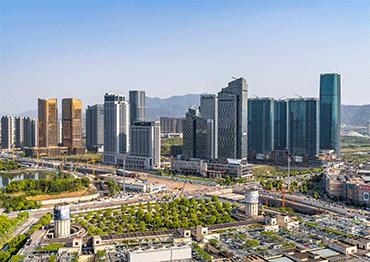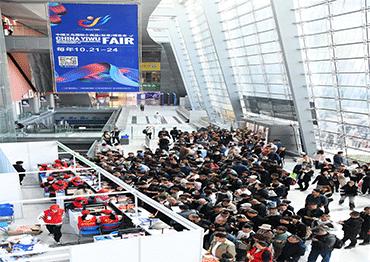To get a sense of what that means, you can visit the center of the trading universe – Yiwu International Trade City, or Yiwu Market.
The market touts 75,000 stalls where 100,000 suppliers sell a multiplicity of products. It is divided into five districts covering 6.4 million square meters, each of which has distinct categories. District 1 houses toys, jewelry accessories and ornaments, District 2 has bags, hardware, electronic equipment and car accessories, District 3 has stationery, sports equipment, and cosmetics, District 4 is socks, shoes, and textiles, and finally District 5 is beddings and curtains.
The districts aren’t sections of a building. You’ll need to grab a cab or two if you want to sample more than one district in one day. And I say “sample,” because seeing an entire district is more than a day’s work itself. People say that if one spends eight hours a day shopping and five minutes at each stall, it would take over 8 months to go through the whole market.
Walking down the aisles of this sprawling four-floor building of popular District 1, you might feel like you’ve fallen through the rabbit hole. Countless permutations of grinning dolls, transforming plastic robots, ray-guns that whizz and pop, costume jewelry stalls that glitter like a thrifty dragon’s hoard, a cornucopia constantly updated to meet the shifting tastes of a global market.
Most stalls are wholesale-only, and the few that offer retail have signs indicating the fact. This is a place where orders are counted by the thousand. Shopkeepers are so busy packing goods, they don’t have time for the patter that draws in punters. The sound of shredding packaging tape resounded through the whole mall, like horses being lashed to run faster and never stop.
But even this gigantic market can’t hold everything. There are other wholesale markets featuring hot products like Jiangbei Xiazhu, known as the country’s “top livestreaming e-commerce village.” This urban village provides a complete supply chain for those who want to hawk goods on camera, including training courses for hosts. Every shop has a device constantly sharing its coming-and-goings with an online audience, like a portal that takes you into a world of pure consumption. If you are a gold-seeking influencer, this is a place of worship.
One mall’s exterior crows its goal of “collecting the superfines from the worlds, developing the friendship with all clients” in English and Chinese. This naked ambition might not be obvious when you chat to those manning the market stalls, who are down-to-earth and unpretentious. But the fruits of “collecting the superfines” is clear at 6 pm, when convoys of Porsches, Land Rovers, Mercedes and BMWs trail out of the markets’ parking lots – often with boxes of goods spilling out of the trunk onto the back seat.
Just a short trip from the markets, new glass skyscrapers crowd together in the city’s nascent CBD, with the 215-meter World Trade Center as a centerpiece, though it noticeably lacks the frenetic activity of the older markets. Wandering away from the glass and steel, the skyline shrank down to three-stories, shirtless men on motorbikes puff cigarettes at red lights, mothers holler at kids cavorting on the sidewalk and signs offering logistics services are peppered with Russian and Arabic.

 Old Version
Old Version

